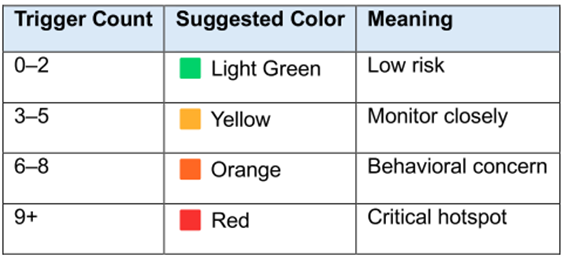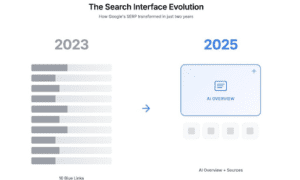Beyond Checklists: Behavior-Based Safety Systems That Can Save Lives
For decades, companies have relied on checklists, audits, and reports to keep workers safe. These tools focus on making sure safety rules are followed and risks are documented. In many ways, they’ve been helpful, but growing evidence shows they may not be enough.
Incidents still happen, even in workplaces where every box is ticked and every rule appears to be followed. This has led many safety experts to ask an important question: Are we missing something?
The answer may lie in an overlooked area, human behavior.
Why Traditional Safety Tools Often Miss Early Warning Signs
Checklists are designed to spot obvious risks, like missing safety gear or broken equipment. But they don’t catch everything. In fact, many workplace incidents begin with subtle changes that aren’t listed in any form.
These early warning signs often show up in worker behavior. A person might withdraw from conversations. A usually friendly worker may suddenly seem quiet and distant. Teams may start rushing tasks, skipping steps, or acting differently under pressure.
These behaviors might seem small at first. But they can signal serious risks, such as fatigue, stress, or even hidden safety hazards. The problem is, traditional safety systems are not built to spot them.
Silent Triggers: The Hidden Signs That Can Predict Risk
This is where the idea of silent triggers comes into play. Silent triggers are quiet, often unnoticed behaviors that may show up before an incident happens.
Some common silent triggers include:
- Disengagement: Workers becoming distant or disconnected from their team.
- Abnormal Silence: Sudden lack of communication, especially during tasks or meetings.
- Nonverbal Cues: Avoiding eye contact, changes in posture, or signs of discomfort.
- Rushed Work: Teams trying to finish tasks too quickly, skipping normal routines.
These subtle signals can happen in any workplace, from construction sites to office spaces. They are often brushed aside as mood swings or normal stress. But ignoring them may allow serious risks to grow unnoticed.
The Silent Trigger™ Theory, developed through field research, focuses on exactly these types of behaviors. It has been gaining attention for offering a structured approach to recognizing and responding to such warning signs. The full theory, along with practical tools, is explained in its published paper.
Moving From Checklists to Real Observation
Recognizing silent triggers requires a different mindset from traditional safety practices. It means looking beyond written reports and instead focusing on real-time observation.
Safety leaders today are being encouraged to do more than just enforce rules. They are being asked to actively watch for signs of behavioral change and engage with their teams on a personal level.
For example, a manager who notices a worker acting withdrawn might start a private, respectful conversation. This isn’t just about checking a box. It’s about understanding what’s really happening before a problem grows bigger.
Behavior-based safety is not just about observation, it also involves taking action. When early signals are spotted, teams can make adjustments, offer support, or review work plans before an accident occurs.
A Case for Predictive Safety Systems
Some workplaces are already starting to adopt predictive safety models that blend behavior-based approaches with technology. These systems use simple tools like mobile apps, digital check-ins, or observation logs to track changes in team behavior.
The Silent Trigger™ Theory is one example of this approach. Developed through real-world research, it provides a structured way to recognize and act on behavioral warning signs. It highlights patterns like disengagement, rushed work, and changes in group dynamics, offering practical methods for early intervention.
Organizations interested in exploring this method further can find more details through the Silent Trigger™ Predictive Safety initiative, which connects safety leaders and practitioners working to integrate behavior-based risk detection into workplace safety systems.
The Bigger Picture: Culture, Leadership, and Prevention
Adopting behavior-based safety systems isn’t just about spotting risks. It’s also about building a stronger workplace culture where people feel seen, heard, and supported.
When managers pay attention to silent triggers, they’re sending a message, that safety isn’t just about paperwork or penalties. It’s about people.
This approach encourages open conversations, emotional awareness, and shared responsibility. It also helps leaders strengthen trust within teams, which is often a missing piece in traditional safety models.
In the long run, behavior-based systems may help companies avoid major incidents, reduce stress-related issues, and create healthier workplaces overall.
A Call to Action: It’s Time to Rethink Safety
Across industries, there is growing interest in new ways to approach safety. Organizations are beginning to realize that checklists alone are not enough to prevent incidents.
By adding behavior-based tools and focusing on real observation, companies can take a more proactive role in risk prevention. Silent triggers offer a clear path forward, helping teams spot hidden risks early, take action, and prevent accidents before they happen.
Those looking to dive deeper into this emerging area can also review the author’s broader research contributions through their ORCID profile.
The message is clear: The future of workplace safety isn’t just about forms or rules. It’s about understanding people, spotting subtle signs, and acting before it’s too late.































